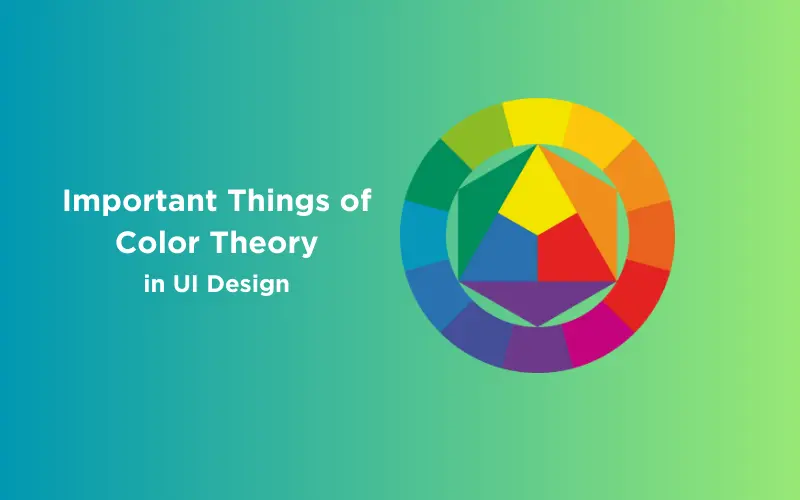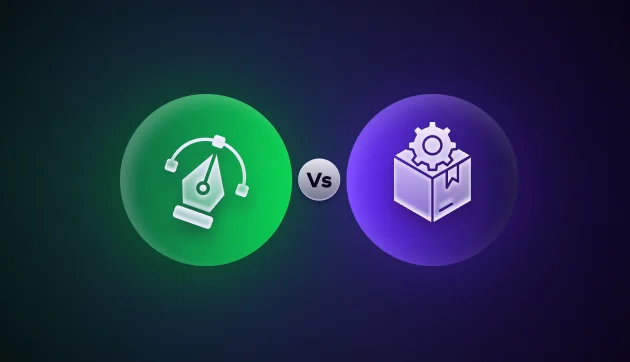
What is Color Symbolism: Color Meanings and Uses Explained
Jan 16, 2025 7 Min Read 6298 Views
(Last Updated)
Do you know why all sustainable brands have green as their primary brand color? Or why did Zomato choose red to represent itself? Well, the concept of color symbolism lies at the core of such decisions. Colors play a huge role in the UI/UX world. Particular colors invoke different emotions, feelings, or responses in the user/viewer.
Using such colors strategically in your designs to get a desired response from your target audience, could be a total game changer for any brand. That brings us back to the question: what is color symbolism? What do different colors mean or symbolize? How do you integrate color symbolism in your UI/UX designs?
If you’re looking for answers to these questions, this comprehensive blog is all you need to get acquainted with color symbolism in its entirety! So, let’s get started.
Table of contents
- What is Color Symbolism?
- Color Symbolism For Key Colors
- Red
- Yellow
- Orange
- Blue
- Green
- Purple
- White
- Black
- Pink
- Brown
- Applying Color Symbolism in UI/UX Design
- To Build and Propagate the Brand’s Voice
- Use Colors to Enhance User Engagement
- Choose Colors to Enhance Accessibility
- Concluding Thoughts
- FAQs
- How Does Color Symbolism Vary Across Cultures?
- What Does the Color Red Symbolize?
- What Does Blue Represent in Color Symbolism?
- How Is Color Symbolism Used In UX/UI Design?
- What Is the Importance of Color Symbolism in Design?
What is Color Symbolism?
Let’s clear the basics first. Color symbolism in design involves using colors to convey deeper meanings and emotional responses, greatly influencing user perception and interaction. This concept intertwines psychology with aesthetics to communicate, engage, and influence at a deeper, more intuitive level.
As we proceed to the next phase, make sure you understand the fundamentals of UI/UX, which includes heuristic analysis, journey maps, testing, etc. If you want to explore more about it, join GUVI’s UI/UX Course with Placement Assistance. You’ll also learn about the tools used in UI/UX which are AdobeXD, Illustrator, Photoshop, Figma, and many more. Build some amazing real-time projects to get hands-on experience. Also, if you want to explore Figma through a Self-paced course, try GUVI’s Figma certification course.
How? Color symbolism is all about making the user feel some emotion and invoke a subsequent response when they see a certain color. These responses can be biological, cultural, or based on personal experiences. For instance, while red may trigger alertness or passion biologically, it can symbolize celebration in some Eastern cultures but danger in Western contexts.
Designers leverage this symbolism to evoke specific emotional responses. The key to mastering color symbolism in UI/UX lies in understanding these multifaceted implications and applying them contextually. Let’s understand the context and meaning of colors in detail.
Color Symbolism For Key Colors
There is a huge wide world of color that helps us feel different emotions. A good harmony of colors balanced with the intricate principles of color theory, will help you achieve a desirable design that’s hailed by most of the users.
Let’s deep dive into the vibrant world of colors and understand the color meanings behind the most used colors:
1. Red

Who doesn’t love red? The meaning of the color red across various contexts is as follows:
Emotions and Psychological Impact
- Energy and Excitement: Red is often associated with energy, passion, and action. It’s a color that can increase heart rate and create a sense of urgency, as witnessed in the branding of clearance sales or limited-time offers.
- Warning and Danger: On the flip side, red is also universally known for signaling danger or caution. This is why it’s frequently used in error messages or warnings in digital interfaces.
Biological Effects
- Attention-grabbing: Biologically, red is a very dominant color. It’s one of the first colors humans perceive as infants. This is why red can be so effective in catching users’ attention quickly.
- Stimulating Appetite: Interestingly, red is known to stimulate the appetite. This is why many food and beverage companies use red in their branding and design.
Cultural Interpretations
- Western Cultures: In Western societies, red often symbolizes love (think Valentine’s Day), excitement, and sometimes aggression.
- Eastern Cultures: In many Eastern cultures, red is a color of good luck and prosperity. It’s used in weddings and other celebrations in countries like China and India.
- Variations in Meaning with Shades/Hues: The meaning of red can vary greatly depending on the shade and context. Darker reds might convey a sense of elegance or sophistication, while brighter reds are more about energy and alertness.
2. Yellow

Yellow is one of the brightest colors that stands out. Let’s understand yellow’s color symbolism across various contexts:
Emotions and Psychological Impact
- Optimism and Cheerfulness: Yellow is often associated with happiness, positivity, and energy. It’s a color that can evoke feelings of warmth and cheerfulness, making it a great choice for designs that aim to create a friendly and inviting atmosphere.
- Attention and Caution: Yellow is a highly visible color. It’s used to grab attention and create a need for caution or slowing down rather than immediate danger.
Biological Effects
- Visibility and Alertness: Yellow is one of the most visible colors in daylight, which is why it’s used for school buses and taxis. It’s good for catching the eye and can make designs stand out.
- Stimulating Mental Processes: Yellow is believed to stimulate the nervous system and promote perception and understanding, potentially making it a good choice for designs that require mental focus.
Cultural Interpretations
- Western Cultures: In Western societies, yellow can symbolize happiness, but also caution. It’s also associated with cowardice in some contexts.
- Eastern Cultures: In countries like China, yellow has historical associations with royalty and respect. It’s also a color of mourning in some cultures like Egypt.
Also Read | Here’s How You Can Become a UI/UX Designer with No Background!
3. Orange

The impactful and fun orange has a lot of significance. Let’s understand its color meaning in detail:
Emotions and Psychological Impact
- Energy and Enthusiasm: Orange combines the energy of red and the happiness of yellow. It is associated with joy, sunshine, and the tropics.
- Creativity and Adventure: Orange represents creativity, determination, and success. It’s often seen as the color of innovation and adventure.
Biological Effects
- Stimulating Activity: Orange can stimulate mental activity and appetite, and it’s often used in the food industry for this reason.
- Encouraging Socialization: This color promotes a sense of general wellness and emotional energies such as compassion and warmth.
Cultural Interpretations
- Western Cultures: In Western societies, orange can symbolize autumn, warmth, and caution.
- Eastern Cultures: In countries like India, orange is a sacred and auspicious color.
4. Blue

Here is what blue signifies in the world of color symbolism:
Emotions and Psychological Impact
- Trust and Reliability: Blue, especially in its darker shades, is often associated with stability, trust, and reliability. It’s a color that can create a sense of security and professionalism.
- Calmness and Serenity: Lighter blues are known for their calming effect, often used in designs to create a relaxed and peaceful environment.
Biological Effects
- Reducing Stress: Blue is known to have a calming effect on the nervous system, which can help in reducing tension and creating a sense of tranquility.
- Enhancing Productivity: Certain shades of blue can help enhance concentration and mental clarity, making them ideal for productivity apps and websites.
Cultural Interpretations
- Global Appeal: Blue is generally well-received across cultures, often associated with the sky and sea, symbolizing freedom and openness.
- Variations in Meaning: While universally popular, the meaning can vary; for instance, in some cultures, blue can represent mourning.
Also Read | Here’s Why UI/UX Design is the Best Career Choice For You
5. Green

One of the most widely used colors, here’s the color symbolism of green:
Emotions and Psychological Impact
- Growth and Harmony: Green is often associated with growth, balance, and renewal. It’s the color of nature, symbolizing harmony and freshness.
- Health and Prosperity: In many cultures, green represents health, prosperity, and tranquility.
Biological Effects
- Soothing Effect: Green has a soothing effect on the eyes and is known to reduce anxiety, making it ideal for creating a relaxing user experience.
- Encouraging Balance: Green is balanced and restful, often used in environments where stress reduction is key.
Cultural Interpretations
- Western Cultures: In Western societies, green often symbolizes eco-friendliness and growth.
- Eastern Cultures: In Eastern cultures, green can represent new beginnings, youth, and eternal life.
6. Purple

A gen-z favorite, let’s understand the emotion and color meaning associated with purple:
Emotions and Psychological Impact
- Creativity and Imagination: Purple is often associated with creativity, imagination, and spirituality. It’s a color that can stimulate artistic and creative thinking.
- Luxury and Royalty: Historically, purple was a color of royalty, nobility, and luxury, due to its rare and expensive dyes. It still carries these connotations today.
Biological Effects
- Calming the Mind: Purple has a calming effect on the mind and nerves, encouraging imagination and creativity.
- Balancing the Mood: It can balance the mood, uplift spirits, and calm the mind and nerves.
Cultural Interpretations
- Western Cultures: In Western societies, purple is often associated with luxury, power, and wisdom, as well as with mysticism and magic.
- Global Symbolism: Across various cultures, purple can represent nobility, spirituality, and enlightenment.
Read Now | 8 Things Every UI/UX Designer Should Know: How Many Do You Know?
7. White

The OG color, white has a special place in color symbolism. Let’s see the meaning of color white:
Emotions and Psychological Impact
- Purity and Simplicity: White is often associated with purity, cleanliness, and simplicity. It’s a color that conveys a sense of clarity and openness.
- Space and Minimalism: White is key in creating a sense of space and minimalism, offering a clean and uncluttered look.
Biological Effects
- Enhancing Focus: White backgrounds can reduce visual strain and help focus on the content or elements in a design.
- Sense of Order: White can create a sense of order and efficiency, making it ideal for designs that aim for a clean, organized look.
Cultural Interpretations
- Global Meaning: While white is often associated with purity and peace, in some cultures, it’s also a color of mourning and sadness.
8. Black

Let’s check out the color symbolism of black and the various emotions it invites:
Emotions and Psychological Impact
- Sophistication and Elegance: Black is often associated with sophistication, elegance, and formality. It’s a color that can convey a sense of luxury and high quality.
- Power and Mystery: Black also represents power, strength, and mystery. It can create an aura of intrigue and depth in a design.
Biological Effects
- Contrast and Clarity: Black provides excellent contrast, especially with brighter colors. This makes it ideal for creating text that is easy to read and elements that stand out, widely used in creating the dark mode in UI/UX design.
- Focus and Simplicity: In terms of visual weight, black can anchor a design, focusing the user’s attention on specific elements.
Cultural Interpretations
- Western Cultures: In Western societies, black is often associated with mourning and formality, as well as sophistication and luxury.
- Global Variations: Across different cultures, black can have negative associations like death and evil to positive ones like rebirth and resilience.
9. Pink

Let’s learn about what all pink symbolizes through its color meaning:
Emotions and Psychological Impact
- Femininity and Warmth: Traditionally, pink has been associated with femininity, tenderness, and warmth. It’s a color that often evokes feelings of compassion and nurturing.
- Playfulness and Romance: Pink also represents playfulness and romance, making it a popular choice in designs that want to convey a sense of fun or affection.
Biological Effects
- Soothing and Calming: Lighter shades of pink have a calming effect and are often used in environments where tranquility and relaxation are desired.
- Stimulating Conversation and Connection: Pink can stimulate conversation and encourage friendliness, making it ideal for social apps and websites.
Cultural Interpretations
- Western Cultures: In many Western cultures, pink is seen as a gentle and feminine color, often used for products targeting women and girls.
- Variability in Perception: In some cultures and contexts, it’s not strictly seen as feminine and can symbolize joy and creativity.
Also Read | Highest Paying UI/UX Design Jobs For You
10. Brown

The color of the soil has great significance when it comes to color symbolism. Let’s understand how:
Emotions and Psychological Impact
- Stability and Reliability: Brown is often associated with stability, reliability, and resilience. It’s a color that conveys a sense of strength and dependability.
- Warmth and Comfort: Brown also suggests warmth and comfort, reminiscent of earth and nature, creating a welcoming and reassuring atmosphere.
Biological Effects
- Grounding and Centering: Brown can have a grounding effect, helping to create an environment that feels stable and secure.
- Reducing Fatigue: Being a natural and neutral color, brown can help reduce visual fatigue, making it suitable for backgrounds and areas where a soothing effect is desired.
Cultural Interpretations
- Global Symbolism: Brown is generally seen as a solid, earthy color worldwide, often associated with reliability and the natural world.
- Varied Associations: Depending on the context, brown can also be seen as dull or simplistic. It’s important to balance it with other colors to avoid these negative associations.
Applying Color Symbolism in UI/UX Design
Now that you’ve understood what various colors mean, let’s understand how you can use the amazing concept of color symbolism to take your UI/UX designs to the next level:
Also Read | Must Follow UI/UX Design Principles
1. To Build and Propagate the Brand’s Voice
Choose the right color palette. Your color choice should mirror the brand’s personality. Is it bold and energetic or calm and reliable? The palette sets the stage for your design to flourish.
2. Use Colors to Enhance User Engagement
Use the colors that click to enhance user engagement. It’s all about creating an environment where users feel comfortable, intrigued, and eager to explore, significantly reducing bounce rates.
3. Choose Colors to Enhance Accessibility
While choosing colors, we need to focus on designing for everyone. Remember, not everyone sees colors the same way. You need to design keeping in mind color blindness and visual impairments.
Kickstart your UI/UX journey by enrolling in GUVI’s UI/UX Course where you will master technologies like AdobeXd, Illustrator, and Figma, and build interesting real-life UI/UX projects. Alternatively, if you would like to explore Figma through a Self-paced course, try GUVI’s Figma certification course.
Concluding Thoughts
While using color symbolism in UI/UX design, you need to remember what works theoretically might not hit the mark in real life. So, you should continuously test your color choices with real users and be ready to adapt based on the feedback.
Colors are one of the most powerful mediums to convey brand identity naturally. As UI/UX designers, our job is to harness the power of colors to create memorable, effective, and accessible designs. Remember, each color has a voice. We just have to make sure it speaks the right message.
Also Explore: Designing for Dark Mode: Aesthetics, Accessibility, and User Preferences
FAQs
-
The meanings of colors can drastically differ between cultures. For example, blue may represent warmth in one culture but coldness in another. Similarly, colors like pink and blue have varied associations with gender across different societies, illustrating the diverse interpretations of color.
-
Red symbolizes energy, passion, and danger. It evokes strong emotions and is often used to grab attention or signal urgency.
-
Blue represents trust, calmness, and stability. It’s widely used to convey professionalism and reliability, especially in corporate branding.
-
In UX/UI design, color symbolism is used to enhance user experience, guide user behavior, and convey the brand’s message effectively through visual cues.
-
Color symbolism plays a crucial role in design by evoking specific emotions and conveying messages without words, significantly impacting user perception and interaction.



















Did you enjoy this article?